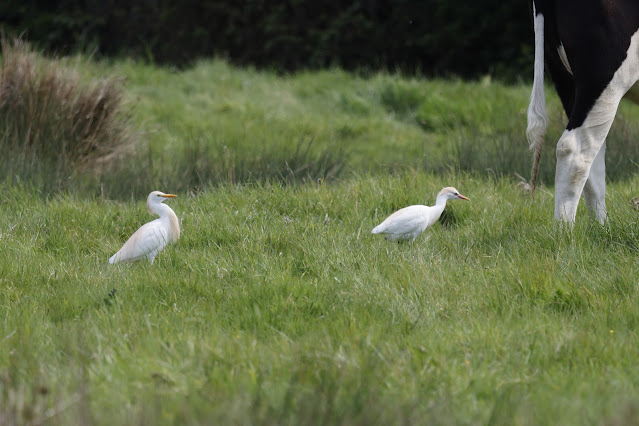The wind remained a light north-easterly but today it delivered the goods after the writing was on the wall yesterday evening when Andrew had 14 Poms past Hillfield Road Car Park and I managed to get another Pom and 2 Arctic Skua after that.
Today I was up at 5am (the Cuckoo was singing in the Lane again) and back at the Bill in eager anticipation- a small crowd had already gathered. Highlights of a seawatch for me upto about 930am included 5 fantastic Poms, 2 Arctic Skuas, 1 Great Skua, 18 Little Gull, 2 Black Tern, 2 Red-throated Diver, 2 Velvet Scoter, 89 Common Scoter and good little passage of waders included 36 Sanderling, 2 Dunlin, 1 Grey Plover, 3 Ringed Plover, 5 Whimbrel, 3 Curlew, 14 Bar-tailed Godwit, 11 Redshank (a very good record for the Bill), 11 Oystercatcher and 10 Turnstone. There were also a trickle of Barn Swallows and 3 Common Swift. My list of migrants HERE and full log HERE.
It was already a good morning and then news broke of a Temminck's Stint on Ferry Pool and there was also 3 Whinchat, a Wheatear and a Red Kite there. List HERE.
It was a work day at the Lodge today but I managed to pop out a couple more times inlcuding one time with Isaac to Hillfield Road Car Park, to look for more Poms but alas it was in vain. Fingers crossed for more action tomorrow.
Pom, Bonxie and Temminck's were all Peninsula ticks for me so now on 191 and year list is now on 164 after a bumper five year ticks today with Black Tern and Whinchat to add the local patch ticks. What I'm still getting used to also is that seabird and shorebird migration round here can occur in light winds with clear blue skies like today in contrast to what inland local patching was all about- cold northeast winds and rain! It was beautiful weather, (I was even birding with an ice cream at one point) and some excellent vis-mig. So yes in short- a good day!























































